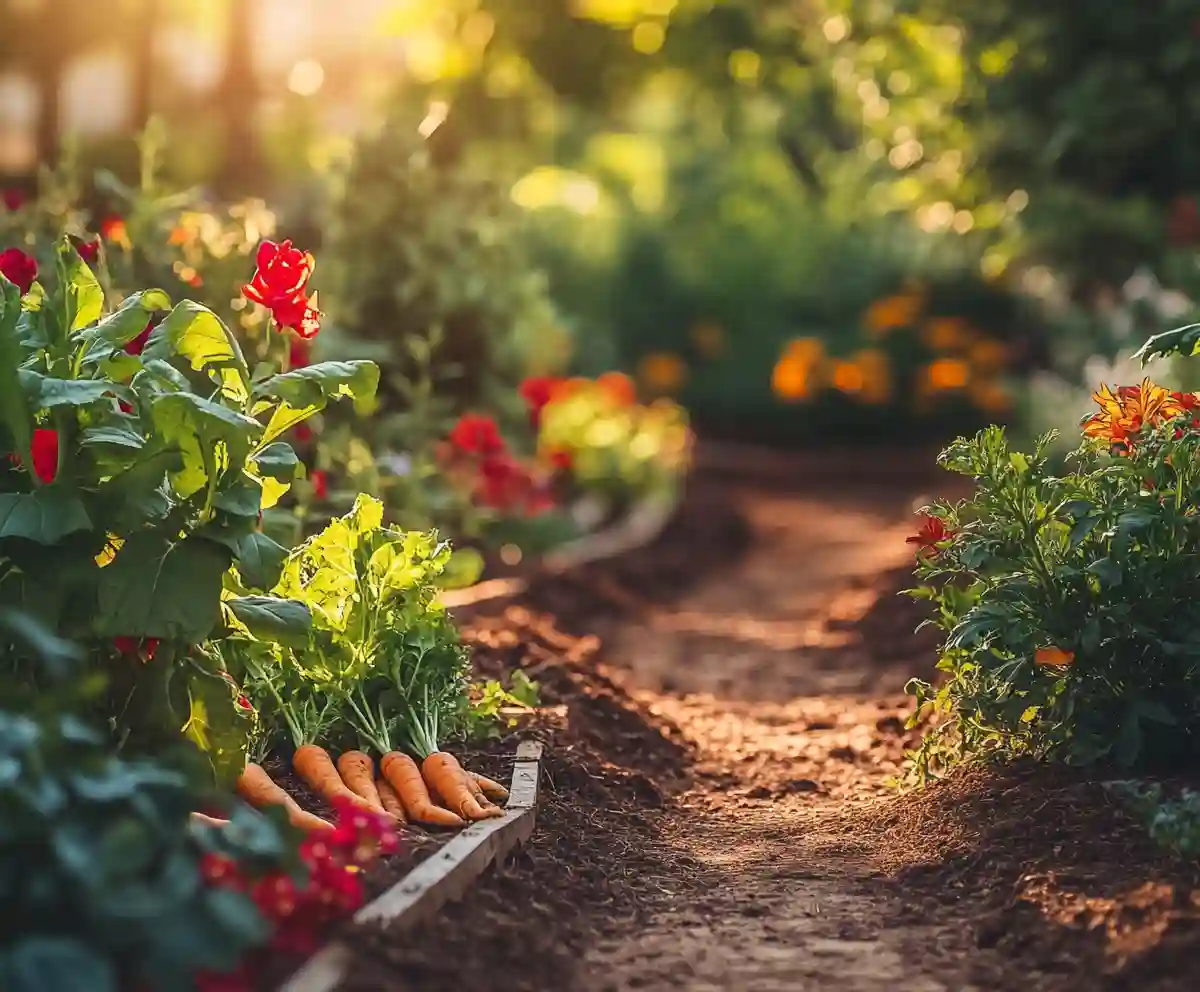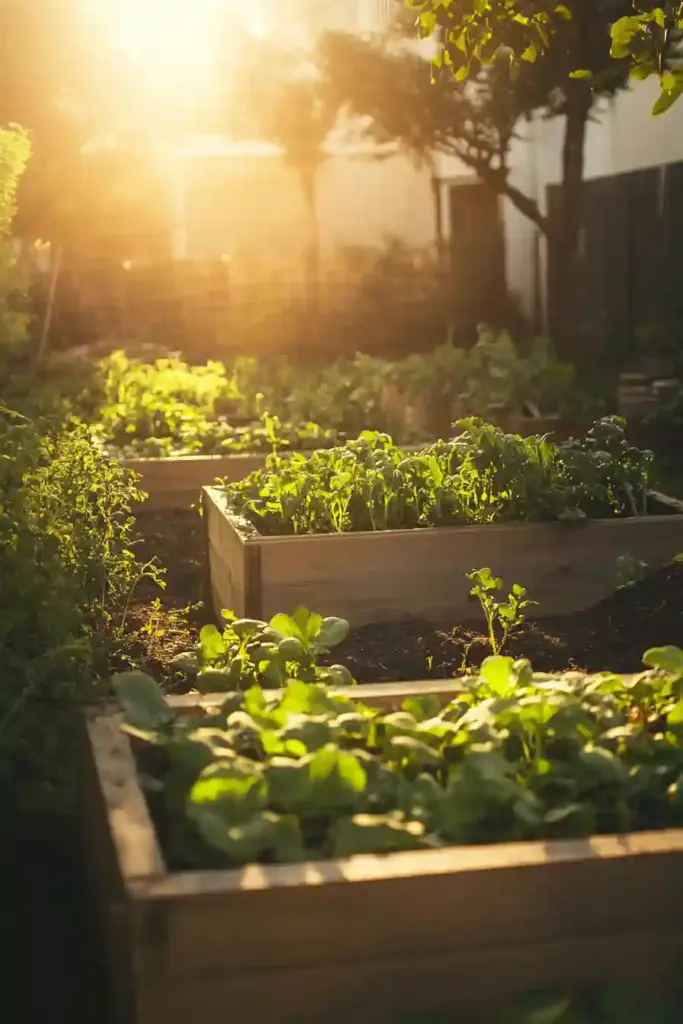If you’ve ever stared down a weed-choked garden bed and thought, there’s got to be a better way, you’re not alone. That’s exactly what led me to discover no dig gardening—a surprisingly simple method that not only restored my overgrown garden, but also transformed how I think about soil, plants, and the power of doing less.
Forget hours of back-breaking digging and endless weeding. With no dig gardening, you’re working with nature, not against it—building healthier soil, growing stronger crops, and actually enjoying your time in the garden. Whether you’re a seasoned grower or a curious beginner, this method can change your gardening game completely.
Why No Dig Gardening Works: It All Starts Beneath the Surface
At the heart of no dig gardening is a powerful yet often overlooked truth: soil is alive. Beneath your feet lies a bustling ecosystem—worms, fungi, microbes, and countless other organisms—all working in harmony to support plant life. When we dig, till, or disturb the soil, we disrupt this delicate balance.
🧬 The Living Soil Web
Healthy soil is more than just dirt. It’s a living network that:
- Breaks down organic matter into nutrients
- Channels water efficiently
- Hosts beneficial fungi like mycorrhizae, which help plants absorb minerals and even communicate underground
By skipping the digging, you’re preserving these microscopic relationships. Instead of turning the soil, you add organic material—like compost—on top, mimicking the way nature layers fallen leaves in a forest. This approach allows soil organisms to keep doing their job without interruption.
🚫 Why Digging Can Do More Harm Than Good
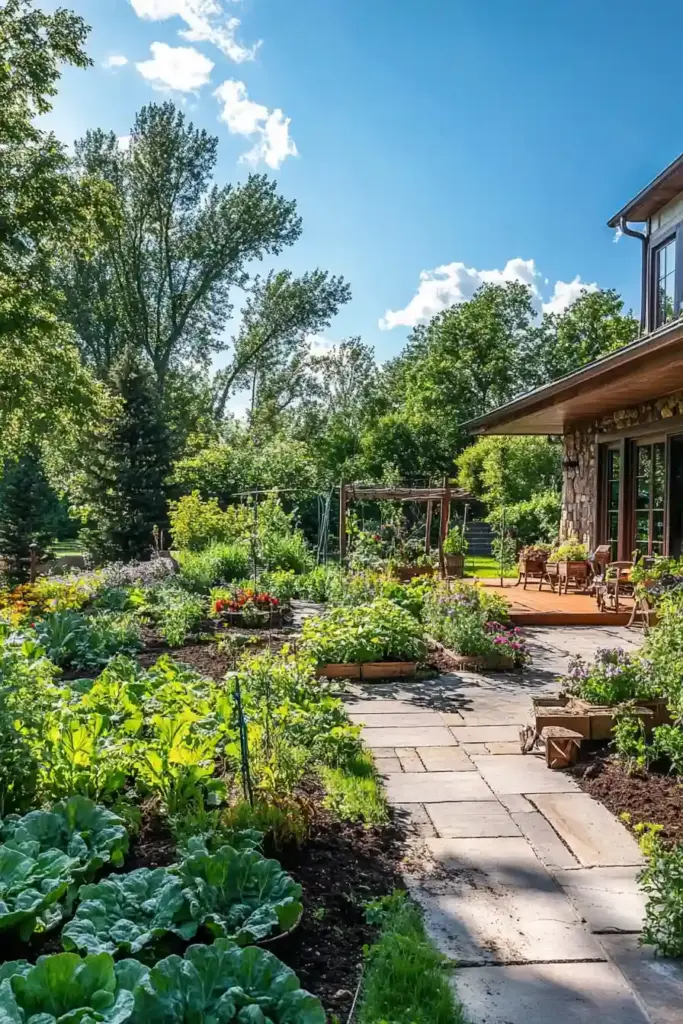
Traditional gardening often involves tilling or double digging. While this might seem helpful, it can:
- Destroy mycelial networks (the “internet” of the soil)
- Expose dormant weed seeds to light, causing them to sprout
- Dry out soil layers that should remain moist and biologically active
No dig gardening avoids all of this. By adding compost on the surface, you’re feeding the soil from above—just as nature intended—while letting worms and microbes do the heavy lifting.
How to Start a No Dig Garden: A Step-by-Step Beginner’s Guide
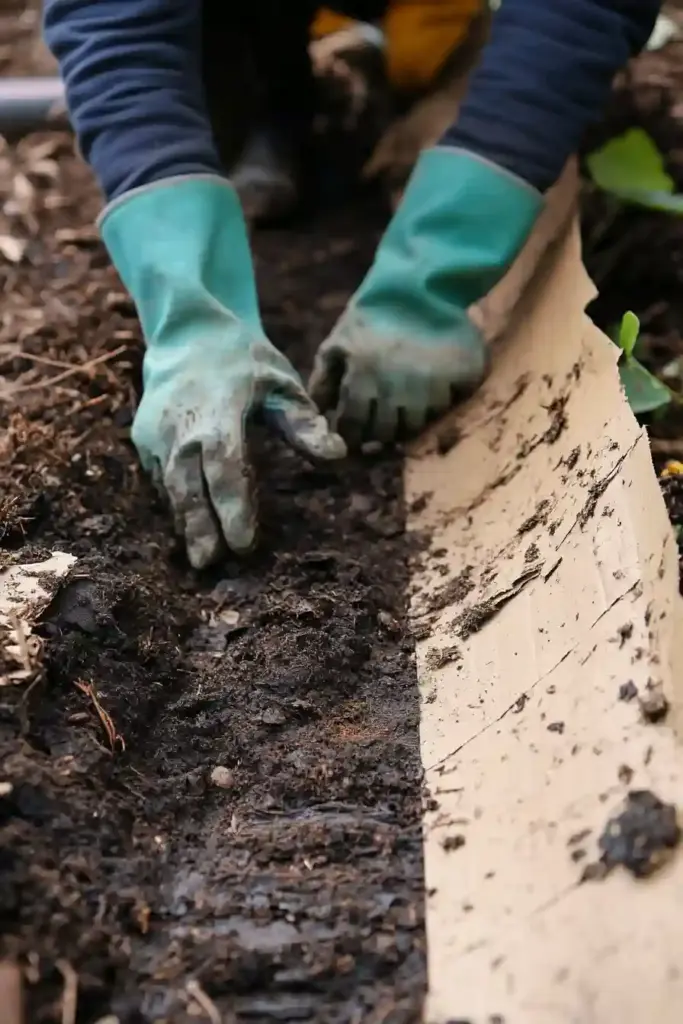
You don’t need special tools, raised beds, or perfect soil to begin. One of the most beautiful aspects of no dig gardening is that it works anywhere: lawns, weedy patches, old flower beds, even compacted ground. Here’s how to get started:
🌱 Step 1: Choose Your Spot
- Look for a flat, sunny area (at least 6 hours of sunlight daily is ideal)
- Don’t worry if it’s full of grass or weeds—No Dig works on neglected plots, too
📦 Step 2: Lay Down Cardboard
- Use plain, uncoated cardboard (remove tape and stickers)
- Overlap the edges to fully block light and suppress weed growth
- This layer acts as a barrier and will slowly break down, feeding the soil
🌿 Step 3: Add a Thick Layer of Compost
- Spread 3–4 inches of compost or well-rotted manure on top of the cardboard
- You can use store-bought compost or make your own over time
- No need to dig or mix—just layer and go
🌸 Step 4: Start Planting
- Sow seeds or transplant seedlings directly into the compost layer
- Roots will grow down naturally into the soil as the cardboard decomposes
🛠 Bonus Tip: Cover for Winter Setup
If you’re prepping in colder months:
- Cover the area with black tarps or plastic sheeting to pre-kill weeds
- In spring, remove the cover, add cardboard and compost, then plant
With just a few hours of effort, you’ll have a low-maintenance, weed-suppressing, soil-enriching bed ready to grow food. Next up: we’ll talk about what to grow in a No Dig garden, including some of the easiest and most rewarding crops for beginners.
What to Grow in a No Dig Garden: Best Crops for Success
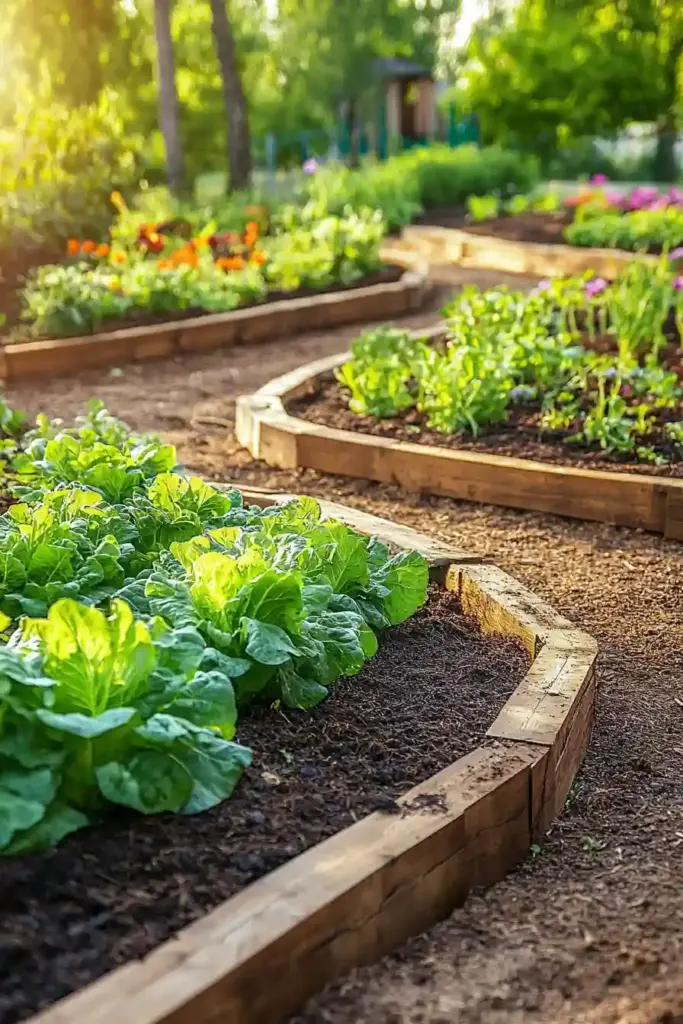
No dig gardening supports a wide range of vegetables, fruits, and flowers. Since the soil stays undisturbed and nutrient-rich, plants tend to be healthier and more productive. Whether you’re after leafy greens or root vegetables, the options are wide open.
🥕 Top Crops for No Dig Beginners
If you’re just getting started, these plants are easy, resilient, and fast-growing:
- Lettuce & Salad Mixes
Quick to grow, low-maintenance, and ideal for continuous harvesting. - Spinach & Chard
These leafy greens love rich compost and bounce back after picking. - Radishes
Great for succession sowing—harvest in just 3–4 weeks. - Carrots & Beets
Thrive in loose, compost-rich soil—no digging means fewer deformed roots. - Potatoes
Plant directly on the compost surface and cover with more mulch—no trenches needed! - Broad Beans & Peas
Cold-hardy and nitrogen-fixing, making them excellent early-season crops. - Onions & Garlic
Minimal effort with big payoffs. Just plant and wait.
🍓 Add Flavor and Color with Fruits and Flowers
- Strawberries: Tuck them between veggies or dedicate a whole bed
- Herbs: Parsley, basil, thyme, and dill do especially well in compost
- Pollinator Flowers: Nasturtiums, calendula, and borage boost biodiversity and beauty
💡 Companion Planting Bonus:
Mixing flowers and herbs with your vegetables can help deter pests and attract beneficial insects—making your garden both productive and naturally resilient.
The Long-Term Benefits of No Dig Gardening
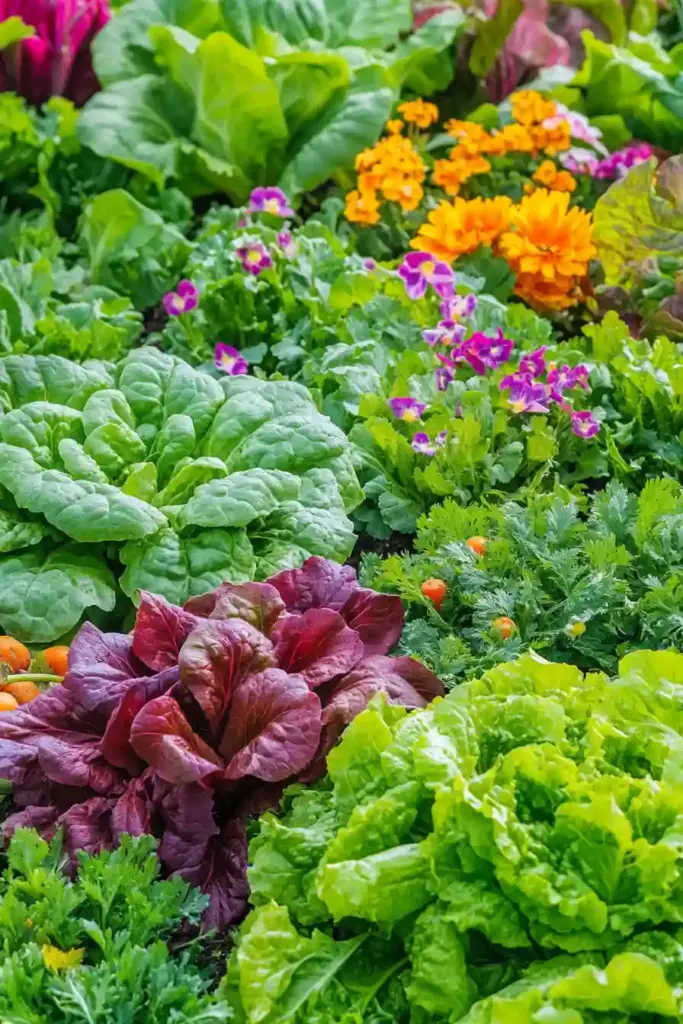
While the idea of skipping the shovel might seem too good to be true, the science—and experience—says otherwise. No dig gardens become more fertile, more productive, and easier to manage with each passing season.
🌿 1. Healthier Soil = Healthier Plants
Because you’re consistently adding organic matter on top of your soil, you’re feeding a growing population of microbes, fungi, and earthworms. Over time:
- Soil becomes fluffier and better at retaining moisture
- Natural pest resistance increases
- Nutrient availability improves, meaning bigger, tastier crops
🐛 2. Fewer Weeds Every Year
The cardboard-and-compost combo smothers weed seeds and prevents new ones from sprouting. Plus, by avoiding tilling, you don’t bring buried weed seeds to the surface.
Each season:
- Weed pressure decreases
- Time spent weeding drops dramatically
- You focus more on harvesting than battling invaders
🕒 3. Less Work, More Reward
No dig gardening saves you time and energy in the long run:
- No digging or tilling
- Less watering thanks to moisture-retaining compost
- Minimal soil amendment needed—compost is the only input
You can easily maintain your garden with seasonal top-ups of compost (usually 1 inch per year), and that’s it.
🌎 4. It’s Better for the Planet
No dig gardening is also eco-friendly:
- Reduces carbon release from soil disturbance
- Encourages biodiversity and natural pest control
- Avoids synthetic fertilizers and chemicals
Pro Tips & Troubleshooting for No Dig Gardening Success

Even the most low-maintenance garden needs a little attention now and then. Here are practical tips to keep your no dig space flourishing and frustration-free.
🐌 Slug and Snail Control (Without Chemicals)
Slugs love damp, compost-rich gardens—but there are easy ways to keep them under control:
- Remove lower leaves from plants like lettuce and brassicas as they age—slugs are drawn to yellowing foliage
- Avoid wooden bed borders, which become hiding spots
- Water in the morning, not at night, to reduce dampness overnight
- Encourage natural predators like birds, frogs, and beetles
🌱 Dealing with Persistent Weeds
Most weeds will die off under cardboard and compost, but a few hardy ones may sneak through:
- Pull them as soon as you spot them, while roots are still shallow
- Add another light mulch layer (straw or compost) to block light
- For aggressive weeds like bindweed or horsetail, try solarization—covering with plastic to “cook” the weeds before layering compost
🔁 Make Your Own Compost (Eventually)
While store-bought compost is fine to start with, making your own will:
- Save money
- Reduce food and garden waste
- Give you better control over quality
Start a compost pile with:
- Kitchen scraps (no meat or dairy)
- Garden clippings
- Shredded cardboard and paper
- Dry leaves
Turn occasionally and keep it moist—nature will do the rest.
📚 Keep Learning from Experts
- Follow Charles Dowding on YouTube for visual how-tos and seasonal updates
- Check out books like No Dig Gardening or The Living Soil Handbook
- Join local or online no dig gardening communities for real-time support and inspiration
Conclusion: Why No Dig Gardening Is Worth a Try

No dig gardening isn’t just a trend—it’s a total shift in how we think about soil, sustainability, and growing food. By working with nature instead of against it, you’ll spend less time weeding and digging, and more time enjoying lush harvests, healthy soil, and the peace of your garden.
Whether you’re reclaiming a wild backyard or starting fresh in a small space, this method makes gardening more accessible, enjoyable, and rewarding—season after season.
So grab some cardboard, pile on the compost, and let your no dig journey begin.

